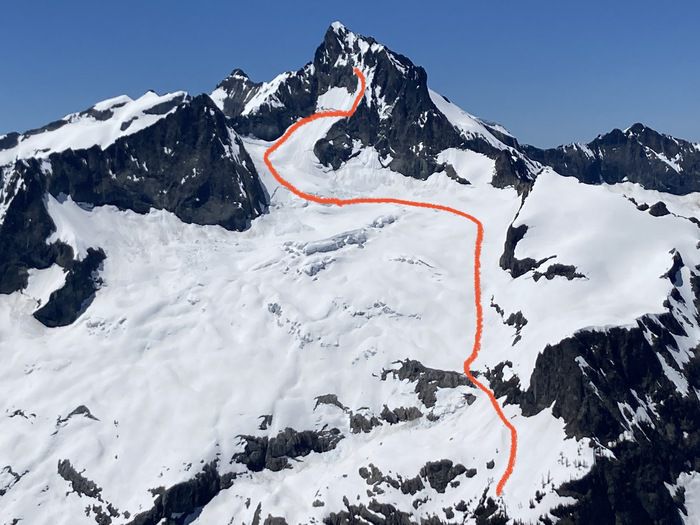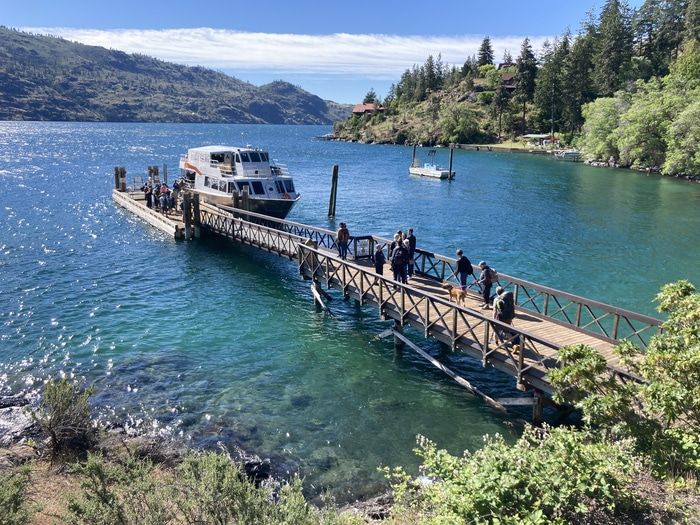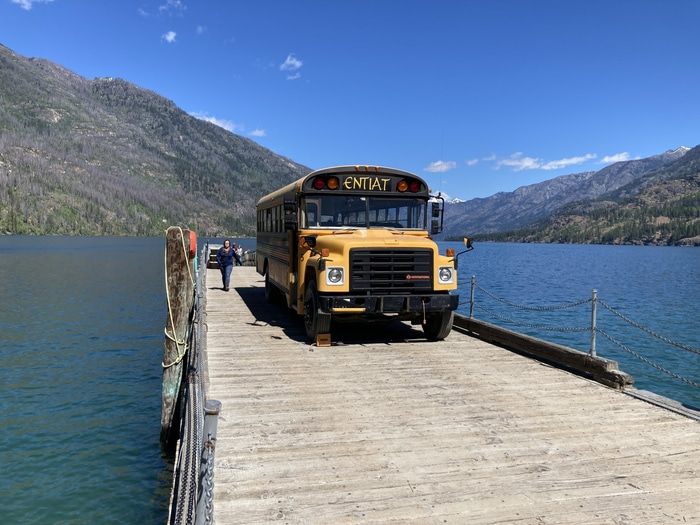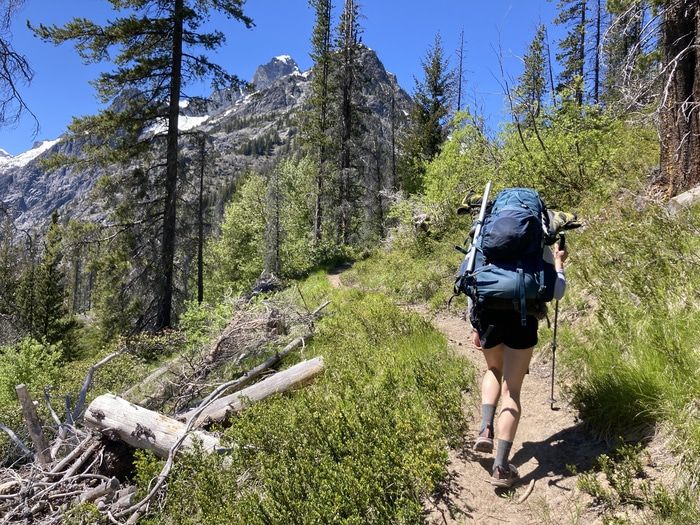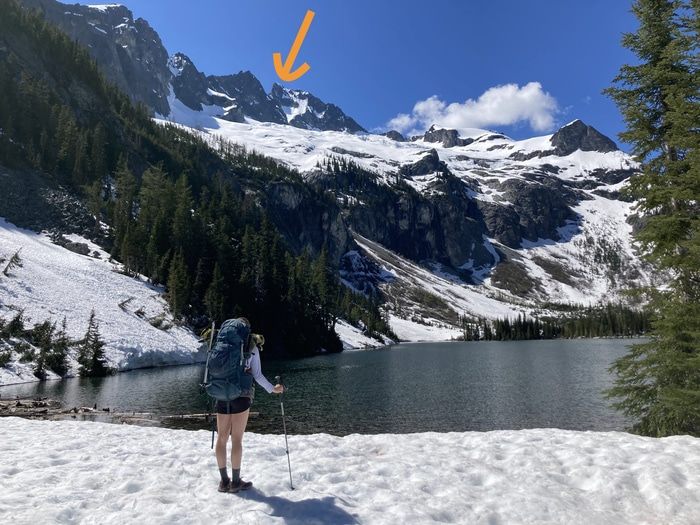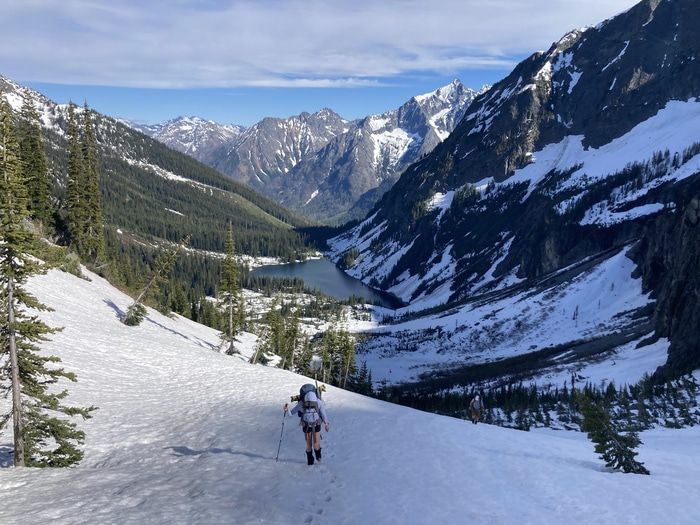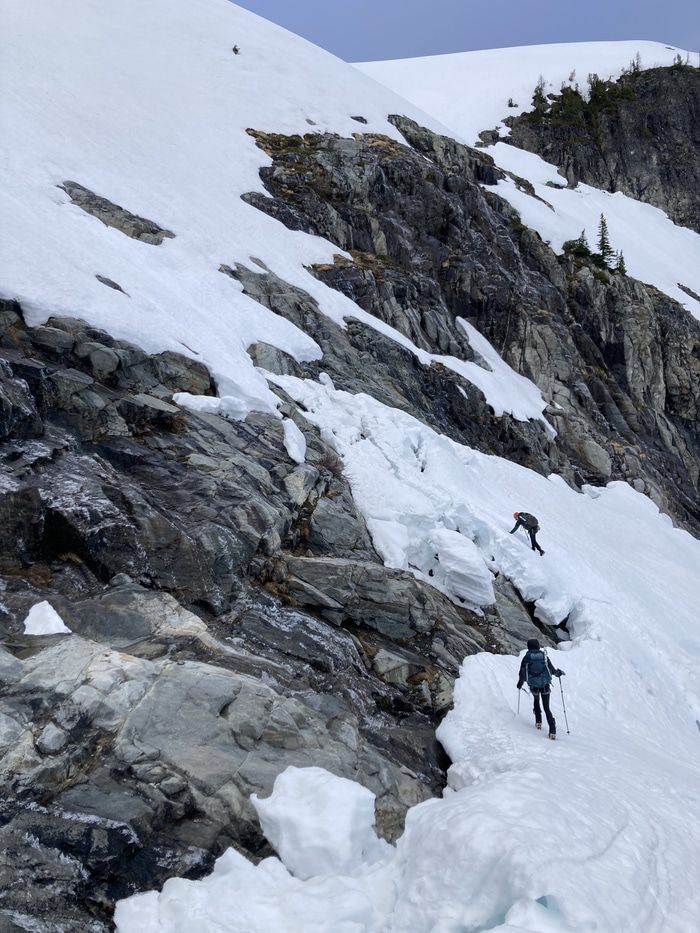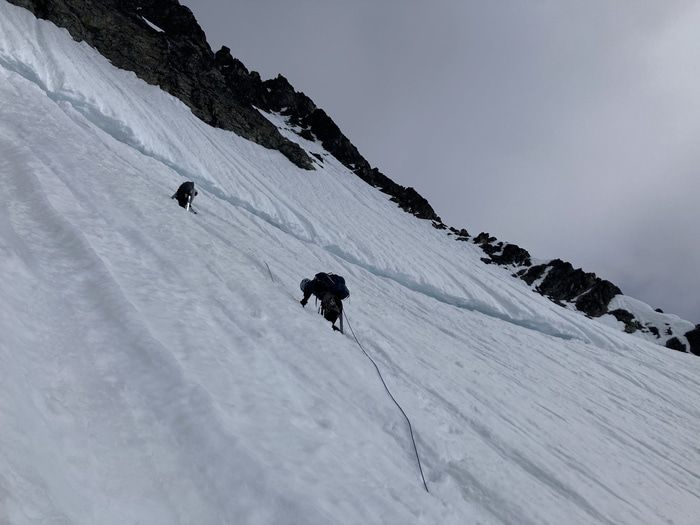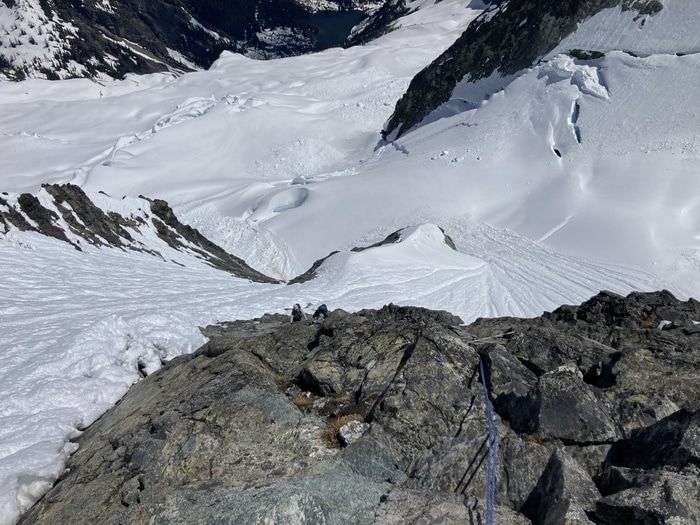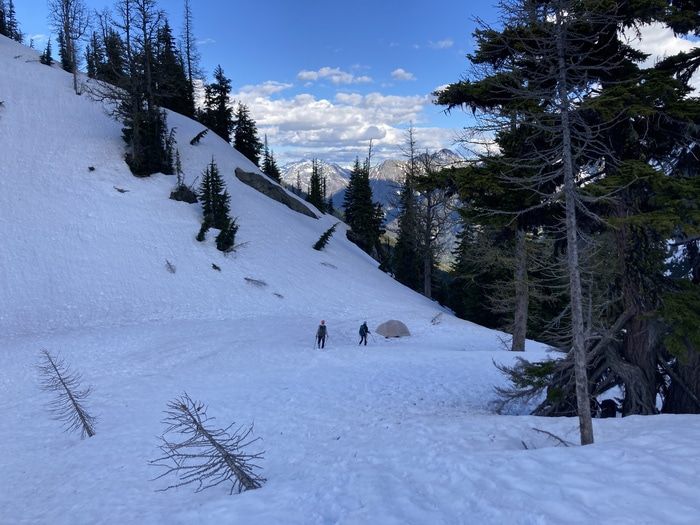Bonanza Peak
For a long time I thought Mount Stuart was the tallest non-volcanic peak in the Cascades, but it’s actually Bonanza Peak. I think Stuart mistakenly gets that reputation because it’s a lot more accessible than the latter.
Boarding the Lady of the Lake
At 10am we caught the Lady of the Lake boat to Lucern. A bus was waiting on the Lucern dock to take us the rest of the way to Holden village. On the way we tried to catch a glimpse of Bonanza. It was still June, early season, and we wanted to know how much snow we’d have to deal with. We dropped off extra gear at the village and started hiking up to Holden lake. The weather was sunny but a cool wind was blowing. With the summer melt in progress, we had to take off our shoes to wade across two creeks. Patches of snow appeared on the trail near the lake and the shores of Holden Lake were completely covered by snow.
Bus to Holden
From here we had our first view of Bonanza. It looked much more vertical than I imagined. Its steep summit block was covered by 800 foot runnels of snow, and a big crack ran across the middle of its face. It’s a general rule that mountains look steeper from far away but the long runnels made it clear that anything falling near the top would not stop until it landed on the Mary Green glacier around its base. It was clear why people choose to wait this one out until the snow is mostly gone.
Trail to Holden Lake
The deep snow on the shore covered most of the vegetation so we did not need to bushwhack much to get around the lake. We did need to zig-zag a little to find snow bridges over the larger creeks. We arrived at Holden Pass around 6pm, pitched the tent and spent a few hours melting water for dinner and to take with us on the climb the next day. I think we went to bed just past 9pm. It was still bright enough to see without headlamps.
Shores of Holden Lake
We woke up at 4am, ate breakfast and packed up. We started uphill at 5am and after a short steep veggie gully, it was solid snow until the waterfall slabs. The slabs themselves were mostly covered by disintegrating snow but we managed to find a solid path to the glacier. We roped up at 7am while eating a snack and looking at snow capped peaks across the valley. At 9am we were at the base of the snow thumb and traversed the steep snow slope below a monstrous snow moat that was forming above.
Climbing up to Holden Pass
From here the snow got even steeper and the exposure a bit scary. We did some steep snow couloirs this winter but Bonanza’s wide open snow face gave me much more vertigo. We roped up for climbing and did a single pitch up snow and belayed off a snow picket. From here we transitioned to mixed rock and snow. I led the pitch in crampons. The rock was wet and crumbly and did not take pro well. I never used anything bigger than a #1. I didn’t see any established rappel stations. I assumed the “official” route was still beneath the snow, but I did manage to find a horn to sling and belay Lance and Cassondra up.
Navigating the waterfall slabs
From here we took off our crampons and led an easier pitch of ledges until we sighted a rappel anchor made of two pitons. I celebrated that we were on route and belayed the rest of the party up. From here it was another pitch of steep snow. I think a full rope length would have reached to the next rocky outcrop, but I didn’t want to be on the snow and worried what our rappel options would be if we got that far. Besides, it was already 2pm and with no possibility of reaching the summit before nightfall we decided to call it. We rapped from the rappel anchor to the previous horn and from there a double rope rappel got us back to the steep snow which we down climbed.
Roping up on the Mary Green glacier
During our double rope rappel, a big serac broke off the wall below us and I watched one refrigerator sized block hurling down the glacier. It hit a crevasse and launched 10 feet in the air before coming to a rest a hundred yards down the hill. Anyone who has ever tried to trundle a snowball down a hill knows the amount of force it takes to keep something that size going. “What a savage mountain” I thought.
Climbing the snow thumb
By the time we were on the glacier, it was 5pm. After a long day in the sun, the glacier was very soft. In parts where we barely left footprints in the morning, we were now sinking to our hips. Some sections definitely felt like snow bridges over crevasses but none ever broke. The snow over the waterfall slabs was now quickly collapsing and we accelerated the process by trampling down it. Overall, the softer snow felt much more secure for walking on the steep glacier slopes.
Looking down from our last pitch
At 7pm we arrived at camp too tired to hike out to Holden. We changed into dry clothes, melted water and ate whatever food we had left over for dinner and used our remaining fuel to melt drinking water. After a good night of sleep we packed up and made quick time to the lake where we hopped in for a refreshing bath before hiking the remaining 5 miles to Holden.
Back at camp
